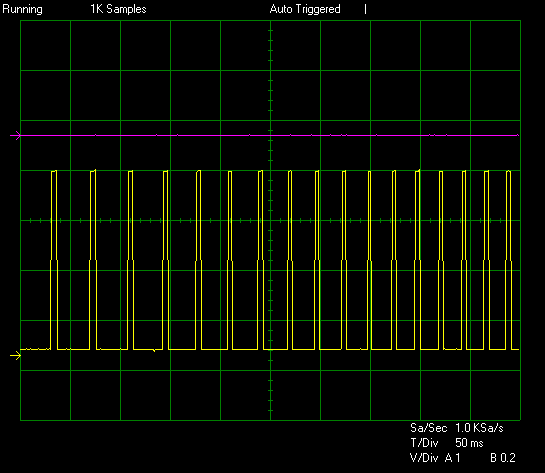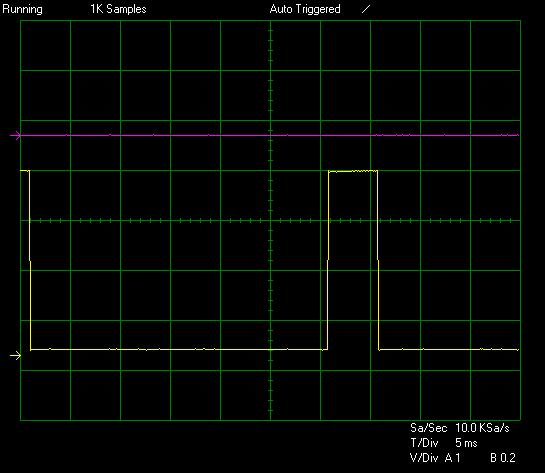Changes by last author:
Changed:
| Early EFi Renault engines came with an unusual trigger pattern on their flywheel. 20 teeth followed by one tooth twice the normal tooth width, followed by a missing tooth twice the normal tooth width. |
|
== Ignition ==
Early 16v Renaults have a cam mounted distributor, driven by a single coil. The coil has an integrated ignition amplifier with three pin and two pin connectors wired: Three Pin connector: * Pin A - +12v feed, on with ignition. * Pin B - Ground. * Pin C - Tacho signal out. Two Pin connector: * Pin A - Not Connected. * Pin B - Ignition control. When the ignition control is disconnected from the ignition module it reads +5v. When it is connected to the ignition module it reads 0v. Scope traces show the ignition pattern on an idling car:
Later Renaults have a 60-2 trigger pattern flywheel and use a Sagem wasted spark coil pack. |
| Are you sure about this? (or is it just speculation after seeing the electronic signal?) Do you have a picture of the wheel ? |
|
== Triggering ==
Early EFi Renault engines came with an unusual trigger pattern on their flywheel. 20 teeth followed by one tooth twice the normal tooth width, followed by a missing tooth twice the normal tooth width. |
|
This looks like an inverted sensor. |
|
Can this trigger pattern be used with our existing Triggering algorithm? * yes, even standard config would work, that is almost equivalent to advanced multitooth filter thresholds normal=tooth=0..150% and missing_tooth=150%..any |
| This works with standard config using a 20 tooth primary trigger setting. Cranking shows a good RPM signal, config info will be posted once the car is running correctly. |

